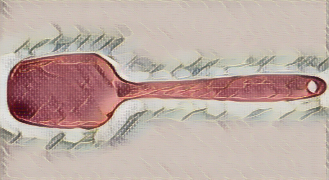During my childhood in the 1970s, discipline was a common affair in most households. I always connected strongly with maternal discipline, and one relative in particular captivated my thoughts profoundly.
Raji, who originally came from India, was a striking figure in our family. She was a tall woman with sharp, angular features, deep-set dark eyes that rarely betrayed emotion, and always wore her thick black hair pulled back in a severe bun. Her skin was a warm brown, and she often dressed in crisp, simple cotton saris or tailored dresses, always impeccably neat. There was an unmistakable air of authority about her—her posture was upright, her movements precise, and her voice calm but commanding. Raji’s presence alone seemed to demand respect, and she rarely smiled, her lips set in a firm line that hinted at her unwavering resolve.
Raji was a doctor and a single mother, a rarity in our community at the time, and she was known throughout the family for her strictness and discipline. Her son, my classmate, was the model of perfect behavior—polite, studious, and always immaculately dressed. He was the child everyone in the family pointed to as an example.
Raji was a strong proponent of corporal punishments and certainly went the extra mile with her collection of half a dozen disciplinary implements. Each one had its own character, and I remember them vividly, almost as if they were characters themselves in the drama of her household. There was a classic wooden ruler, about a foot long, its edges slightly worn from years of use. The wood was smooth and cool to the touch, but when it struck, it made a sharp, echoing crack that seemed to linger in the air. She also kept a steel ruler, heavier and colder, with a metallic gleam that caught the light ominously. The steel ruler was unforgiving—its thin, rigid edge left a stinging, precise line, and the sound it made was a high, metallic snap, almost like a warning bell.
Then there was the base rod of a plastic hanger, which she had cleverly repurposed as a makeshift cane. It was lightweight, slightly flexible, and pale in color, but it could deliver a surprising sting. The plastic would whistle faintly through the air before landing with a flat, biting smack. Raji stored this rod in her handbag, always ready for use, and the mere sight of her reaching for it was enough to make her son’s posture stiffen with dread.
The bamboo cane was perhaps the most traditional of her implements. It was about two feet long, pale yellow with darker nodes, and had a smooth, glossy finish. When she flexed it, it would bend just slightly, making a faint creaking sound. The bamboo cane was kept on a high shelf in her son’s room, always visible but just out of easy reach, a constant reminder of its purpose. Its strikes were swift and left thin, red welts that stood out starkly against the skin.
The rattan cane was even more formidable—longer, slightly thicker, and with a rougher texture. Its surface was ridged and fibrous, and when it was used, it made a low, whistling swoosh followed by a dull, resonant thud. The rattan cane was stored in the corner of the study, leaning against the wall, and its presence seemed to radiate authority. I remember the way my heart would race just looking at it, imagining the pain it could inflict.
But the most intimidating of all was her homemade strap. Raji had crafted it herself by cutting a thick leather belt in two, removing the buckle, and slicing one half into three equal strips. She then stacked these strips and duct-taped them securely to the lower end of the other half, creating a heavy, multi-layered strap. The leather was dark brown, with a slightly rough, pebbled texture, and the duct tape at the end was silver and wrinkled. When she snapped it in her hands, it made a deep, menacing crack that sent chills down my spine. The strap was kept in a drawer in her son’s desk, hidden from casual view but never far from mind. Its weight and flexibility meant it could deliver a punishing blow, and the marks it left were broad and angry, lasting for days.
Each implement had its own sound, its own feel, and its own emotional weight. For Raji’s son, the anticipation of which one she might choose was almost as punishing as the discipline itself. For me, just seeing them lined up or catching a glimpse of one in her bag or on a shelf filled me with a mix of fear, fascination, and awe at Raji’s unwavering resolve.
Raji put these implements to use frequently and effectively. My mother and the other ladies in the family often discussed how Raji disciplined her son, and they all agreed that her punishments were quite severe. To attest to this, it was not unusual for her son to show up at school with red marks on his legs and hands.
My mother told me that Raji had this concept of instant obedience, whereby her son had to obey the rules and follow her instructions instantly and without question. Every time he failed to do so, she would punish him.
Raji always carried one of her rulers or the handy plastic cane in her handbag when coming to family gatherings. If her son stepped out of line, she would simply take him to the restroom and punish him. My stomach would be in a knot as I watched her sternly drag her son to the restroom, her face set in that unyielding expression.
I remember one particular afternoon at a family gathering, when her son, distracted by a game, failed to respond the first time Raji called him. Without raising her voice, she stood up, her sari rustling, and beckoned him with a single, commanding gesture. He followed her, head bowed, into the nearest restroom. The door closed behind them, and the house fell silent. Moments later, the sharp, unmistakable crack of her wooden ruler echoed faintly through the hallway, followed by the high, metallic snap of her steel ruler. Raji believed in swift, decisive punishment—her method was always the same: she would have her son stand straight, hands outstretched or sometimes bent over, depending on the offense. She would deliver a set number of strokes, each one measured and deliberate, never in anger but with a sense of duty. Sometimes, if the misbehavior was more serious, she would use the bamboo cane or even her homemade strap, the heavy leather leaving broad, red marks. In her culture, such discipline was seen as a sign of parental care and responsibility—a way to ensure children grew up respectful and obedient. Raji often explained to my mother that in India, strict discipline was not only accepted but expected, especially from single mothers who had to prove their strength. Her actions, though severe, were rooted in a deep sense of love and a desire to prepare her son for the challenges of life.
Raji was also deeply involved with her son’s academic studies. She was demanding and pushed her son hard. She enforced long study hours and forbade any playtime on regular schooldays. Her son had no option but to be the top student. Raji would come to school regularly and check with teachers on how her son was doing. If she heard any complaint, her son would return to school the next day with red marks.
I would long to see Raji. At family gatherings, I would sneak and gaze at her for as long as I could. I would observe how obedient and well-behaved her son was around her and fantasize about how strict she must be with him at home.
When we visited her, on the occasions she allowed her son to play with me, I would go to his room where I could see the instruments of discipline. They always caught my attention, and I would feel a cold chill run through me just seeing them resting on the shelf or study table.








